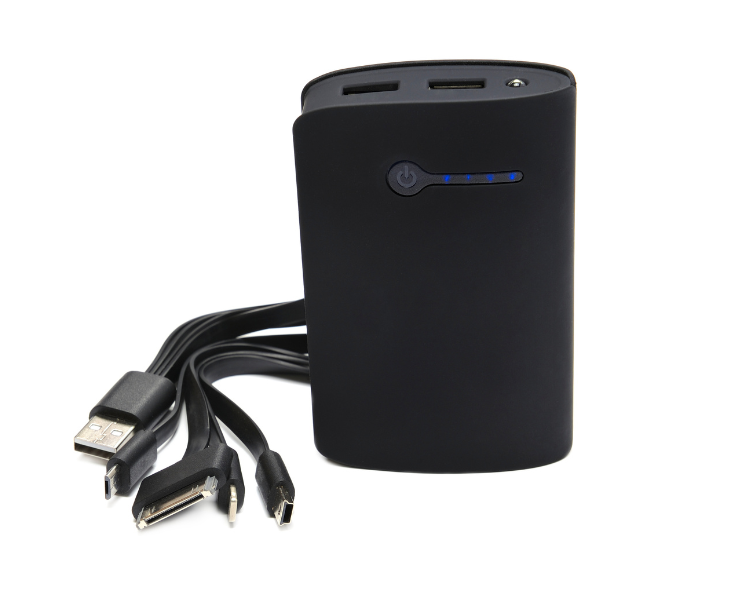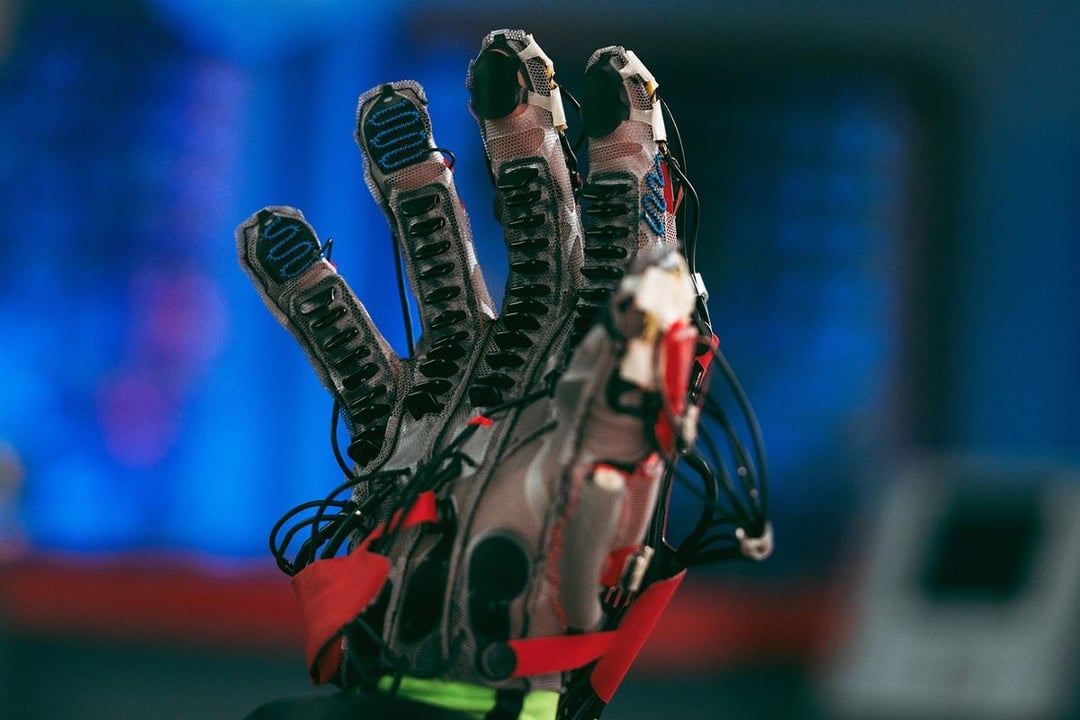The State of Wearable Technology
In early June, I attended and presented at the annual Wear Conference in Scottsdale, AZ. The Wear Conference examines the breakthroughs and advancements in the integration of textiles and technology. Key players from across the smart fabrics, e-textiles, and the wearable technology space joined the conference to learn about market advancements, industry innovations, commercialized products, and smart fabric standardization. This year the conference focused on remote health monitoring.
The talks were amazing, and I learned a lot from two days at the conference. Wearable technology is advancing at a faster pace each year. Conferences—such as the Wear Conference—help key players collaborate with each other and, more importantly, bring a greater awareness of wearable technology to the market.
Here are some of my takeaways from the Wear Conference.
1. 'Wearables' Is a Broad Term
The first thing you’ll notice when researching wearable is that the term is very loosely defined. You’ll find terms such as:
- Health Monitors
- Fitness Trackers
- AR/VR Headsets
- Iot Devices
- Smart Garments
- Functional Fabrics
- E-Textiles
Wearable technology can be defined as interconnected electronic devices that are worn on the body that provide feedback to the user or provide data back to an external application for analysis. Wearable technology can be anything from an Apple Watch to Google Glass to electronics embedded within fabrics or clothing.
In my opinion, a true wearable is clothing that someone would typically wear on their body such as a shirt, underwear or socks that are unintrusive, unnoticeable and something that the user would naturally put on every day. Hardware, such as watches and chest bands, shouldn’t be considered as wearable technology but more of an add-on device. We need to develop a standard term for the sub-classes of wearables to differentiate them from the one another.
2. Multiple Technologies Available
There is a lot of development being made in the wearable space. Some of the technology on display at the Wear Conference was:
- Strain sensing inks
- Heart rate – hardware
- Printed biometric sensors – muscle feedback and fatigue
- Conductive threads
- Heaters for therapy
- FSRs for pressure mapping
- Accelerometers, GPS & gyroscopes for movement tracking
The biggest takeaway is that there are many companies developing products in silos using various technologies. We need more awareness of the developments that are being made in the wearables market. This will allow for more collaboration and faster advancement of wearables.
There is no silver bullet technology but by combining different technologies, we can make more robust products. For example, gyroscopes can help with positioning and spatial data but when connected with wires and hardware, it makes the product uncomfortable to wear. Printed electronic traces can eliminate wires and make a more elegant solution for the end-user.
3. Standardization is Needed for Wearable Technology
Because many companies are developing products on their own without collaboration with each other, everyone has their own way of testing and evaluating their wearables. How should circuits be tested? How are the wearables stressed for robustness and longevity? How should fabrics be washed? Is there a standard for stretch testing? Etc.
Standards for testing and evaluation can set the baseline to further e-textiles and wearables from an emerging technology to an adopted technology. The same standards would help to educate and enable innovation at a faster pace. Testing standards will allow the comparison of materials and products. This would leave very little to individual interpretation of what’s needed and accelerate speed to market.
For more information on the standardization of wearables, check out the American Association of Textile Chemists and Colorists (AATCC).
4. Battery Pack Manufacturers Are Missing From the Party
Everyone has their own version of battery power, wiring, connectors, and communications. What is missing from the party are the companies that specialize in delivering power and data transfer.
Having been to a dozen or so conferences on wearable technology, I have yet to see a battery pack manufacturer attend any of the shows. This missing link in wearable technology is the collaboration between electronic textiles and power.
The industry wrestles with balancing power, comfort, run-time, weight, and ergonomics. Having the right battery manufacturers collaborating on wearable designs will help speed up market acceptance.
5. Wearables Need to Be Worn - Lack of Run-Time Will Be a Barrier to Adoption
As I mentioned before, wearables need to be comfortable and unintrusive. The user shouldn’t know that they are even wearing electronics. In the ideal world, you’d get up in the morning, put on your electronic shirt and head out the door.
The reality is that power consumption and run-time are important to the adoption of wearable technology. If the user has to remove the shirt in order to charge it and if it interrupts their daily activity, then the wearable becomes a burden to the user.
6. Connectors Are Critical to the Success of the Industry
Connectors are the means to get the electronics embedded within the soft goods to work with hardware. The design of robust, water-proof connectors will allow for the elimination of wires and improve the washability of the wearable.
The challenge in the current environment is that there is still overuse of wires in electronic textiles. It’s a tried-and-true means of connecting electrical devices. However, for wearable technology, we need a more elegant solution. Ensuring that a wearable is comfortable and conforms to the body allows for greater adoption.
Unless the wearable is meant to be disposable, wearables and the connectors will need to be cleaned. Creating connections directly to a removable battery pack will create a more streamlined approach.
7. More Awareness of Wearable Technology
Hospitals, physicians, med-tech and sports-tech companies need to be more aware of the technological advancement in wearables. The wearable industry needs to collaborate with physicians to understand limitations in medicine and determine how wearable technology can assist. This is where the advancements happen. The rubber hits the road at the intersection of ideas with product realization.
Many of the great products on display at the Wear Conference were due to small medical facilities working with a company that specializes in wearable technology.
A Few Companies to Watch
CELLIANT®, is a performance textile that converts body heat into infrared energy.
Nextiles sews circuitry into fabrics providing elegant solutions to track data from anything and everything we interact with.
Motusi uses athletic wear and movement analysis combined with augmented reality to allow athletes to train from anywhere.
I would be remiss if I didn’t mention Meta. They showed the product development of their new augmented reality gloves with haptic feedback. At first, this looked like a product built by Dr. Frankenstein but after more demonstration, the integration of sensors, pneumatics, and power was used to create an immersive experience for users. This will be an amazing addition to their Oculus headset.
Check Out This Demo Video
Conclusion
The Wear Conference and conferences like it are necessary if we want to accelerate the growth of wearable technology. The more collaboration that takes place will help advance the viability of smart garments and electronic textiles.
I’ll leave you with a vision from Pankaj Kedia, Sr. Director & Global Head Wearables and Smart Audio Portfolio at Qualcomm Technologies, Inc.
``A smart wearable for every child, parent, grandparent, and pet by the end of the decade.``
Meet the Author
 Jamie Orlando is the director of sales and marketing for Butler Technologies. Jamie attended Penn State University where he earned degrees in mechanical engineering and plastics engineering. Jamie has more than 20 years of R&D experience.
Jamie Orlando is the director of sales and marketing for Butler Technologies. Jamie attended Penn State University where he earned degrees in mechanical engineering and plastics engineering. Jamie has more than 20 years of R&D experience.